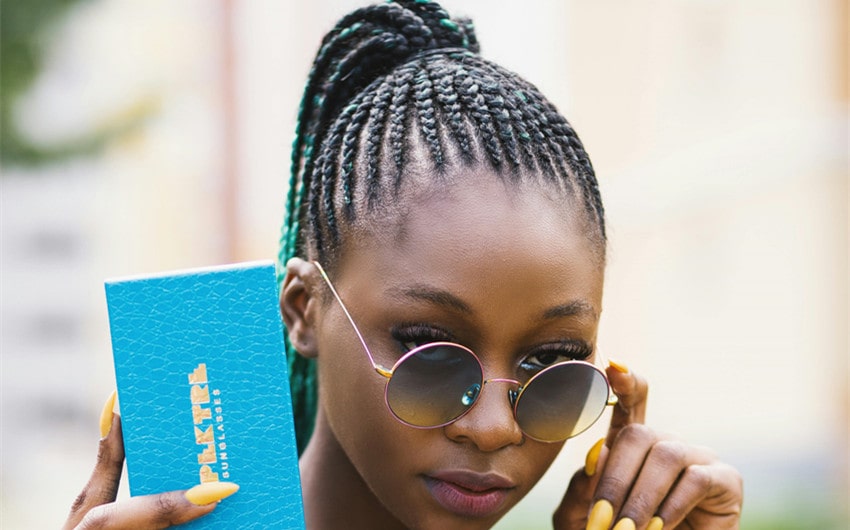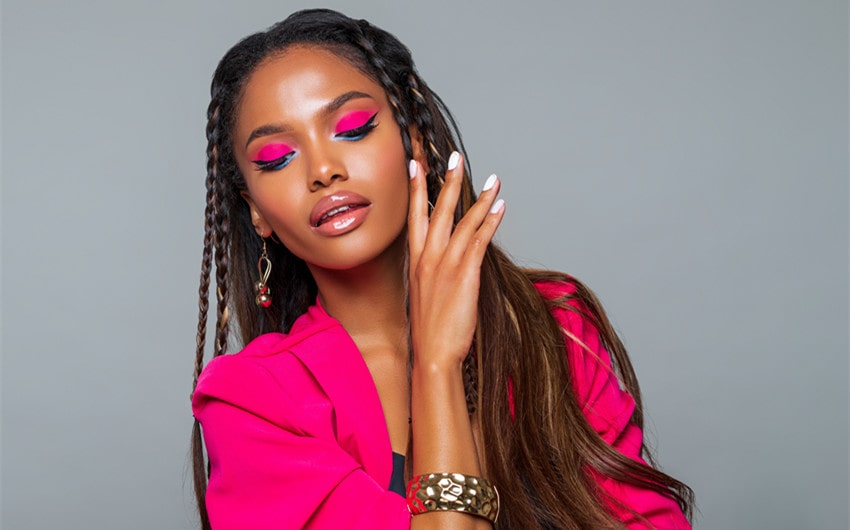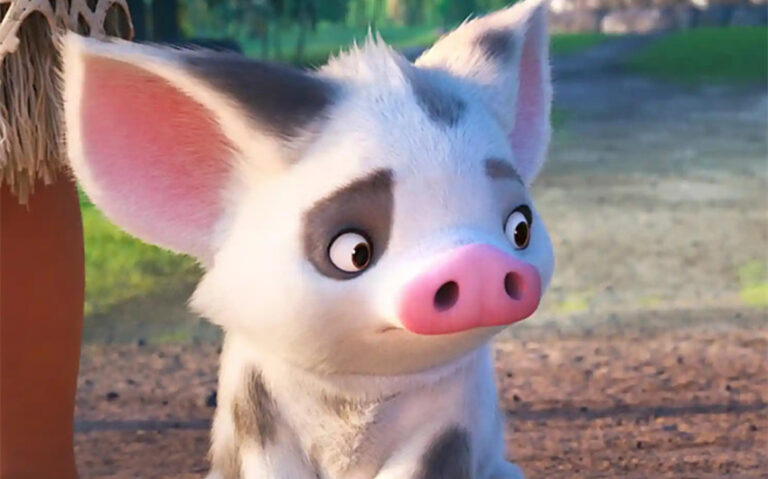Uncovering the Roots: Where Did Braids Originate?
Braids are more than just a hairstyle—they’re a tradition that has been passed down through generations. If you’ve ever wondered, “Where did braids originate?” The answer takes us back thousands of years to ancient Africa.
Braids were not only a way to style hair but also a symbol of identity, culture, and status. Over time, this intricate practice spread across the globe, leaving a lasting impact on various cultures. In this article, we’ll explore the rich history of braids and how they’ve evolved into the styles we see today.
Ancient Origins of Braids

Braids are one of the oldest known hairstyles in human history, with roots that trace back thousands of years. The earliest evidence of braids is found in Africa, particularly in regions such as West Africa and ancient Egypt. These intricate hairstyles were far more than just a way to manage hair; they carried deep cultural, social, and even spiritual significance.
Braids in Ancient Africa
The tradition of braiding hair in Africa dates back as far as 3500 BC, with some of the earliest depictions found in rock carvings and hieroglyphs. In ancient Egypt, braids were commonly worn by both men and women, symbolizing a variety of things including social status, age, religion, and tribal affiliation.
For example, the iconic images of Queen Nefertiti and other Egyptian royals often show them adorned with elaborate braided hairstyles, which were symbols of their high status and divine connection.
In West Africa, braids played a crucial role in society. Each tribe had its own distinctive braiding patterns, which were used to identify members of the community. The complexity and style of the braids could indicate a person’s age, marital status, wealth, and rank within the tribe.
For instance, young girls often wore simpler styles, while more intricate designs were reserved for older women and those of higher social standing. Braiding was also a communal activity, where women would gather to braid each other’s hair, passing down the tradition and techniques from one generation to the next.
Cultural Significance of Braids
In African cultures, braids were not just a practical way to keep hair neat and tidy; they were deeply embedded in the cultural and spiritual life of the people. Braids could signify a rite of passage, such as the transition from childhood to adulthood, or be part of important life events like weddings and religious ceremonies.
The process of braiding itself was often considered sacred, with rituals and prayers accompanying the styling to invoke protection, blessings, and strength.
Moreover, certain braiding patterns were used as a form of communication. During times of conflict, for example, specific braid styles could signal messages or warnings to other members of the community.
In some cases, braids were used to convey resistance and solidarity among oppressed groups. The language of braids was a powerful tool for maintaining cultural identity, especially in the face of colonization and other external pressures.
Archaeological Evidence
The enduring legacy of braids in ancient African societies is supported by archaeological findings. Mummified remains discovered in Egypt often show well-preserved braided hairstyles, demonstrating the skill and care with which these styles were crafted. These mummies, some of which date back over 3,000 years, provide a tangible link to the past and underscore the importance of braids in ancient African culture.
In addition to mummies, ancient artifacts such as sculptures, pottery, and carvings from across the African continent depict individuals with braided hair. These artistic representations further highlight the prominence of braids in various African societies, illustrating the widespread and long-standing tradition of this hairstyle.
Spread of Braids Across the Continent
As different African tribes migrated and interacted with one another, braiding techniques and styles spread across the continent, leading to a rich diversity of braided hairstyles.
This cultural exchange allowed for the development of new styles and the adaptation of braids to suit different environments, lifestyles, and needs. For example, in the Sahel region, where the climate is arid, braids helped to protect the hair from the harsh sun and wind, while in more humid regions, they were used to manage the natural texture of the hair.
The influence of African braiding traditions can still be seen today, both within Africa and in the African diaspora. Many modern braiding styles, such as cornrows, box braids, and Senegalese twists, have their origins in these ancient practices, serving as a testament to the enduring cultural significance of braids.
Braids in Other Ancient Civilizations

While the origins of braids are deeply rooted in Africa, the practice of braiding hair also spread across other ancient civilizations, where it took on different cultural meanings and stylistic expressions. From Greece and Rome to the Celtic and Nordic cultures, braids have been a significant part of human history around the world. Each of these civilizations adapted braids to their own cultural contexts, making them a universal yet distinctly local form of expression.
Braids in Ancient Greece and Rome
In ancient Greece and Rome, braids were a popular hairstyle among women, symbolizing wealth, status, and elegance. Greek women often wore their hair in elaborate braided styles, sometimes interwoven with ribbons, gold threads, or even pearls to indicate their social standing. These hairstyles were not just about fashion; they were also a reflection of the wearer’s place in society.
Ancient Greece
For instance, in ancient Greece, married women typically wore their hair in more intricate and reserved styles compared to unmarried girls, whose braids were often simpler and looser. The use of braids was also closely tied to religious practices.
During certain rituals, women would braid their hair in specific patterns as a form of offering to the gods or as part of their ceremonial attire. The famous Caryatids, the sculpted female figures serving as architectural supports on the Erechtheion temple in Athens, are depicted with braided hairstyles, showcasing the cultural importance of braids in ancient Greek society.
Ancient Rome
In ancient Rome, braids were equally significant. Roman women, especially those from the upper class, often wore their hair in complex braided updos that required the assistance of a skilled hairdresser or servant. The styles could include multiple braids pinned together in intricate designs, sometimes adorned with jewels or veils.
These braided hairstyles were not just a symbol of beauty but also of power and affluence. Empresses and noblewomen used their hairstyles to make political statements, with certain braids becoming associated with specific families or dynasties.
Braids in Celtic and Nordic Cultures
Braids also held a prominent place in Celtic and Nordic cultures, where they were often associated with warriors and strength. The Celts, who inhabited much of Europe before the rise of the Roman Empire, were known for their distinctive braided hairstyles.
Both men and women wore braids, which were often combined with twists and knots, creating intricate patterns that reflected their connection to nature and their spiritual beliefs.
Celtic Culture
For Celtic warriors, braids were not just decorative; they were a symbol of readiness for battle. The act of braiding one’s hair before a fight was seen as a way to prepare mentally and physically, ensuring that the hair would not obstruct vision or movement during combat.
The patterns and styles of braids could also denote the warrior’s rank, tribe, or achievements in battle. Braids, in this context, became a form of non-verbal communication, conveying messages of power, identity, and honor..
Nordic Culture
In Norse culture, braids were similarly significant. The Vikings, who were known for their seafaring and warrior lifestyle, often wore their hair in braids. Both men and women in Viking society embraced braided hairstyles, which were practical for keeping hair manageable during long voyages and battles.
For Viking men, braids were often seen as a mark of strength and virility. Braided beards and hair were common, with some warriors adding beads, rings, or other ornaments to their braids to signify their status or to intimidate their enemies.
Viking women, on the other hand, wore their braids as a sign of marital status or social standing. Married women typically wore their hair in complex braids or updos, while unmarried women might have worn simpler, loose braids. The Viking tradition of braiding was also deeply spiritual.
Some sources suggest that braids were associated with the goddess Freyja, who was linked to love, beauty, and fertility. Thus, braids in Norse culture were not just about appearance but also held deep symbolic meaning, connecting the wearers to their gods, traditions, and community.
Braids in Ancient Asia
Braids were also a common feature in various ancient Asian cultures, each adding its own unique interpretation to the practice.
Ancient China
In ancient China, for example, braids were often worn by both men and women, symbolizing filial piety and respect for one’s ancestors. The “queue,” a long braid worn by men during the Qing Dynasty, was a sign of allegiance to the ruling dynasty and was mandated by law.
Refusal to wear the queue was seen as an act of rebellion and could result in severe punishment. This hairstyle was deeply political, representing both submission to the state and the personal identity of the wearer.
India
In India, braids have been part of the cultural fabric for thousands of years. Hindu women traditionally wear long, thick braids, often adorned with flowers, jewels, or sacred threads during religious ceremonies and festivals.
The braid, known as “jatha” or “jata” in Sanskrit, is sometimes associated with the god Shiva, who is often depicted with matted or braided hair. Braids in Indian culture symbolize purity, spirituality, and the continuity of life. They are also associated with feminine beauty and fertility, making them a key element in traditional bridal attire and rituals.
Braids Across Different Eras
Braids have evolved and maintained their significance throughout history, reflecting the cultural, social, and political changes of each era. From the medieval period to the modern day, braids have served as more than just a hairstyle—they’ve been a powerful expression of identity, resilience, and cultural pride.
Medieval Period
In medieval Europe, braids were a symbol of femininity, modesty, and social status. Women often wore intricate braided styles, sometimes adorned with ribbons, threads, or jewels, to signify their wealth and position.
Young girls and unmarried women typically wore their hair in simple, loose braids, while married women opted for more complex updos. Braids also played a role in religious life, with nuns and other religious women wearing modest braided styles as part of their vows of humility and devotion.
Colonial and Post-Colonial Periods
The colonial and post-colonial periods brought significant challenges to traditional braiding practices, particularly in Africa and the Americas. European colonizers often viewed African braided hairstyles as “uncivilized” and attempted to suppress them. Despite this, many African communities preserved their braiding traditions as a form of resistance and cultural preservation.
During the transatlantic slave trade, enslaved Africans brought their braiding techniques to the Americas, where they became a crucial link to their heritage. In the post-colonial period, braids re-emerged as a powerful symbol of cultural pride and identity, especially during the Civil Rights Movement and the rise of the natural hair movement.
The African Diaspora
The African diaspora played a key role in the global spread and evolution of braided hairstyles. In the Americas, braids became a cornerstone of African American culture, blending African techniques with new influences.
Throughout the 20th century, braids were celebrated as symbols of Black pride and resistance, particularly during the Black Power and Civil Rights movements. Styles like cornrows, box braids, and Fulani braids became popular within Black communities and influenced global fashion trends.
Modern Resurgence and Cultural Significance

Today, braids continue to be a versatile and popular hairstyle, worn by people of all backgrounds around the world. The modern resurgence of braids is fueled by a renewed interest in natural hair, cultural pride, and the global exchange of fashion and beauty trends. Social media platforms like Instagram and YouTube have played a significant role in this resurgence, allowing people to share braiding techniques, tutorials, and styles with a global audience.
Braids have become a symbol of empowerment, creativity, and individuality, with endless variations and possibilities. From intricate cornrows and box braids to playful fishtail braids and halo braids, these styles continue to evolve, reflecting the changing tastes and identities of the people who wear them.
In the fashion and entertainment industries, braids are often featured on runways, in music videos, and on red carpets, showcasing their versatility and timeless appeal. Celebrities like Beyoncé, Rihanna, and Zendaya have all worn braids, bringing these traditional styles into the spotlight and inspiring new generations to embrace and experiment with braided hairstyles.







